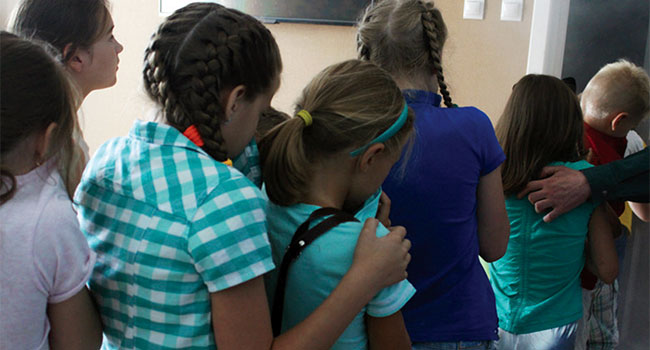
Creating Safer Classrooms with Lockdown & Emergency Response Systems
- By Monique Merhige
- July 17, 2023
Schools in the United States use a variety of emergency response systems, including lockdown procedures, fire alarms, and evacuation plans. Additionally, some schools have implemented technology-based systems such as panic buttons and mobile apps to quickly communicate with law enforcement and emergency responders during emergency situations. These specific systems used can vary depending on the school’s location, size, and resources. Security integrators need to be mindful of all these elements when working with schools to come up with the best action plans.
With active shooter incidents on the rise, schools need to be proactive and research all their options to create a safer environment for staff and students. There were 51 school shootings in 2022 in the U.S. that resulted in injuries or deaths. Schools are extremely vulnerable to these types of incidents due to the influx of people visiting school grounds daily. What can we do as security integrators to help facilitate positive change? One thing is to help educate schools on new technology that can help feed first responders crucial information like the lockdown location, etc., to save lives. There needs to be an easy way for schools to provide first responders with situational awareness so that they can respond quickly and efficiently.
One way to accomplish this is to implement a lockdown & emergency response system. This can help schools protect children, staff, and first responders from death and injury. Teachers need to be trained on the latest lockdown and emergency response systems to successfully lock down their classrooms and ensure the safety of their students. “The three pillars of survival during an active shooter attack are preparation, communication, and notification,” said Lt. Joseph Pangaro, Chief Security Officer at Integra Services. “Having situational awareness quickly is the only way to save lives.” It’s crucial for teachers to get the help they need in the classroom when they need it without having to look for a cell phone. Teachers need to have the power to communicate and notify the right people with a simple push of a button.
Some examples of existing technology-based systems commonly used in schools include:
- Mass notification systems that can send emergency alerts to parents, staff, and students through various channels such as text message, email, or social media.
- Panic buttons that can be installed in classrooms and other areas of the school to quickly notify authorities in case of an emergency.
- Lockdown systems that allow teachers to quickly lock down their classrooms by pressing a button.
- Video surveillance systems that can be used to monitor activity in and around the school, as well as to provide evidence in case of an emergency.
Missing Piece to Lockdown Puzzle
As these existing systems have been used by most schools, there was still a missing piece to the lockdown puzzle. A brand-new technology was brought to market recently that gives teachers power in their classroom when it comes to providing a safe learning environment. A new Lockdown & Emergency Response System, Sentry ERS, was introduced by IPVideo Corporation that provides bi-directional information during an emergency. It allows first responders to have their eyes and ears on the lockdown area and understand clearly the scene on hand. With the simple push of a lockdown button, the entire school lockdown protocol is activated—which includes doors locking, PA announcements, strobe lights activated throughout facility, audible lockdown messages, location beacons activated, and police dispatch notified.
Push notifications can be sent to security/administrators/the community, etc., with live audio and video communications automatically established with first responders to assess and address the critical situation within seconds. “Being able to communicate accurate and real-time information is crucial in any emergency situation,” said David Antar, President at IPVideo Corporation. “Schools have been searching for a solution to this issue for years, and we knew that we could provide the missing piece to the lockdown puzzle.”
Schools now have a simple, easy, and fast lockdown system at their fingertips. The benefits of this new solution include faster responses to critical threats, better informed/prepared first responders & teachers, better emergency preparedness, and complete respect for privacy. By integrating video, voice, text, and GPS location data from classrooms and other areas where traditional video cameras cannot be deployed, schools can now rest easy knowing that all areas are being monitored. Teachers can have their privacy protected and still have the security they need in the classroom.
Challenges of Emergency Response Systems
Some of the challenges that schools are facing when it comes to emergency response and lockdown systems include ensuring that all staff and students are trained on the proper procedures and protocols. It’s important that a system offers a simple practice/drill mode so everyone gets comfortable with it. Additionally, schools must also consider the emotional impact that lockdown drills and emergency situations can have on students and staff.
Another key consideration is the system’s analytics capabilities. Schools should look for an emergency response system that provides comprehensive data analysis and reporting tools, allowing teachers and administrators to easily track student progress, identify areas for improvement, and make data-driven decisions. It should also offer mobility and be available anywhere a teacher/staff member might go such as outside for recess.
Overall, the best emergency response system for a school will depend on their specific needs and preferences. As an integrator, it’s important to review and evaluate different options with schools before making a final decision, and to involve a diverse group of stakeholders in the selection process to ensure the system meets the needs of all users.
This article originally appeared in the July / August 2023 issue of Campus Security Today.